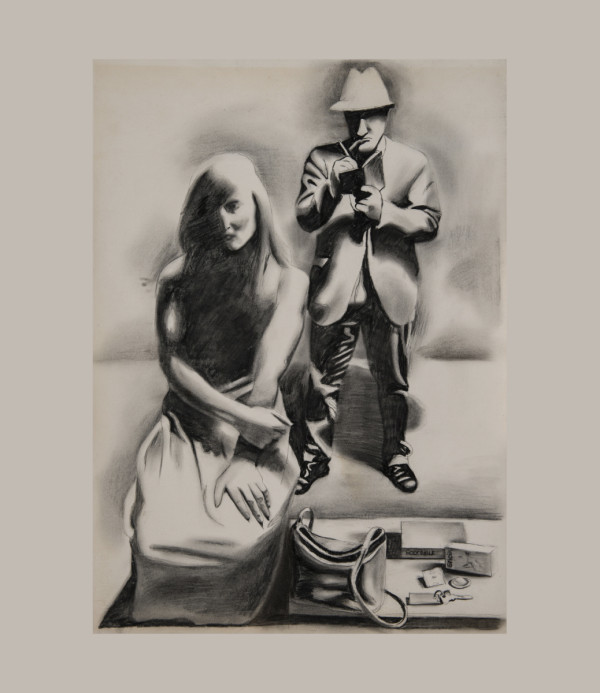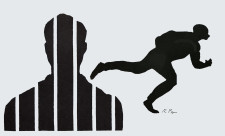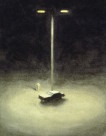Robert applied the look of film noir to a painting series about love and then later to a series about cancer. What was he after? Film noir is a term applied to a number of films made in Hollywood in the 1940s that featured a stylish but dark visual look and disturbingly serpentine plots. A hero or heroine descends into an underworld, full of labyrinths and false identities. Untrustworthy characters are encountered, as values of right and wrong become blurred.
Why does Robert use film noir motifs in a series about love and a series about cancer? Love and cancer are lawless, confusing, full of disguises and misleading paths. Both conditions disrupt the flow of ordinary life and cause a rethinking of values.
The scene that Robert depicts in his drawing, Interrogation, is straight out of Elizabeth Smart’s novel; it may in fact be the most famous scene in the novel. And yet Robert never exhibited this drawing, nor did he follow up with a finished painting. It simply did not fit in with any of his other paintings from the series. In all his other images, he included no minor characters, no policemen, no landlords, no neighbours, no waitresses or disapproving parents, as the novel had. He set his images in the present, not the past. And finally, he avoided scenes that were too tightly connected to the story. The idea of love being lawless and beyond the control of reason or authority was the important idea and this Robert was able to convey in his other images without resorting to an old-fashioned fedora-and-tweed-coated detective.




